Thoughts on Dorn's Deep
 Grum
Member, Mobile Tester Posts: 2,100
Grum
Member, Mobile Tester Posts: 2,100
So, after my xth playthrough of Icewind Dale, I started thinking abit about Dorn's Deep. I figured that I'd share my thoughts and open it up for discussion.
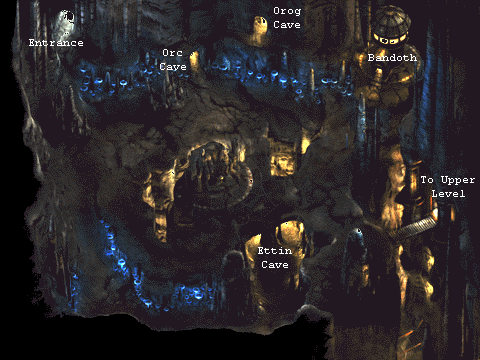
So, looking at Dorn's Deep, the first thing that strikes me is how "unfinished" it appears when you first come to it. There is only a cave entrance leading to the huge cavern. Sure, there is a watch tower that looks like it was made by the dwarves, and there is a large statute of an elf and a dwarf. Besides for that it is just a large cave. There isn't even a gate for blocking it off from the outside world!
Well...this must mean that the dwarfs came to this very late in their existence. There is no evidence of any living quarters here, nor of any true inhabitation like the rest of the hold. So most likely this was the foreign quarter. Where merchants would have stalls (beneath a statue of them with their largest and most important trading partners, something which would have helped them in making favorable deals). No gates existed blocking it off to show that it was open, and only a solitary guard tower was built for security. But to get into the hold proper, there were only two bridges leading to it, meaning that these were easy choke points incase there was an invasion or things got out of hand.
This would also be the only area that outsiders would be allowed into. As evidenced by the book "Rock eaters, they are not." There, an elf writes about being given a tour of the hold, which amazed him enough that he had to write back to the other elves in the hand telling them about it. This shows that the elves of the Hand would have only been allowed into the merchant quarter, giving a skewed impression to them of what the dwarves were capable of building.
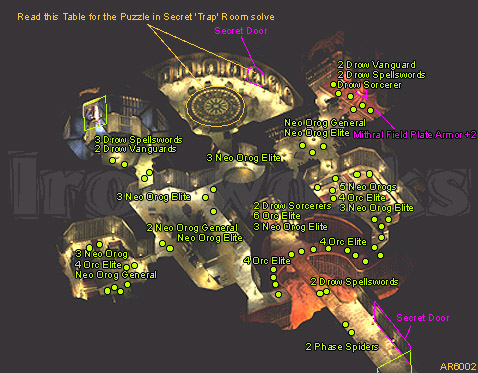
This leads us to the meeting hall of the dwarfs. Notice that unlike the market district, how defensible this is? If you can get over the narrow bridges, you get funneled into an area where dwarven crossbowmen could fire from both sides while warriors could have a shield wall to get through them. So this really isn't so much a meeting hall, or a barracks, but the actual gates to the dwarven hold.
Now, as further proof that this was one of the last areas to be built, you can see the entrance to the orrog caves. Those are just that...caves. Where the settled hold shows intricate splendor everywhere, these caves are completely bare. This most likely shows that there was planned expansion that they didn't get around to.
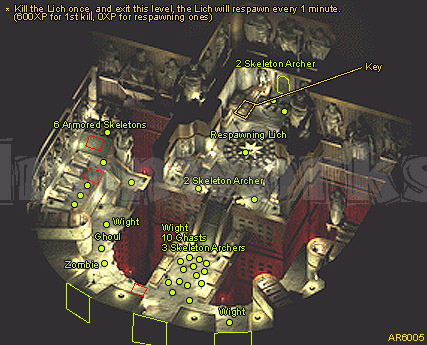
Following this, we get to the halls of the dead. So a question that always hit me was why the halls of the dead were so close to the gates/merchant halls. Well...this would have originally been pretty far from the actual living areas of the dwarfs. They placed this pretty far away, and it was probably very well hidden for a long time. To get there, you had to leave the hold proper and go through an overland area of ice. An overland area which for a long time did not have a large temple complex in it. The gates leading into the halls of the dead were likely hidden so you couldn't see them at first glance, just like how they are hidden inside the gates to the hold. So we are really going into this backwards.
The dwarfs would have entered via the overland ice valley. They would have first walked through the halls of the heroes, so that all would pay proper homage and respect to the greatest of the dwarven dead. From there, they would have entered the image above, where they would be able to go to the resting places of their kinsmen. Beyond that is
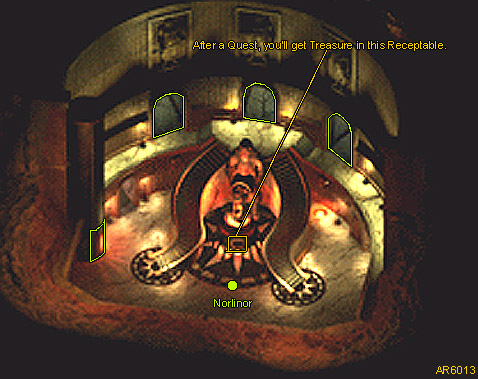
An area for the dwarven priests. Only later when the dwarfs kept expanding and needed a place to interact with the elves was the hold expanded into the caves that we first entered. They continued to go to great lengths to keep the halls of their dead secret (we know that there was at least one dead adventurer in the orog tunnels who couldn't find the secret door, and we can see how intricate and complex the gears in place were to even get to the halls of the dead).
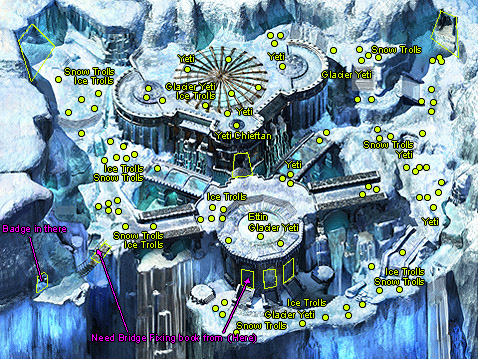
This was likely just an empty tundra for much of the dwarfs' history. It was the cousin of one of their kings who convinced them to build this huge complex. One thing to note is how hidden this place is, showing how the dwarfs chose it for its secrecy.
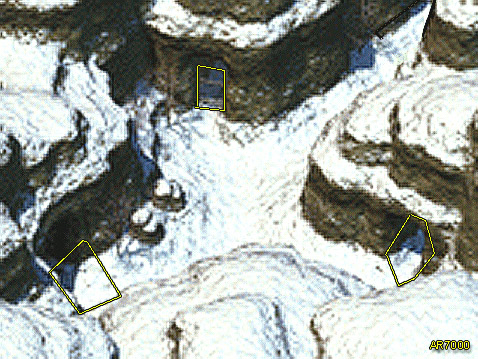
Only one overland entrance, with a very narrow pass to get in. Finding this in the mountains would have been exceedingly hard. We can also see that rather than have huge gates, the dwarves had he preference to remain hidden. Every actual entrance to their lands is just a cave entrance, one that in the height of their power they would have probably kept hidden by blending it into the rocks.
We can see that the elves of the Hand struggled throughout their entire existence with the hordes of greenskins in the north. We can also see that the dwarves took a different route. Where the elves had a huge, grand fortress out in the open, the dwarves preferred to keep their hold a secret from the greenskins. As the dwarves were probably living there before the elves arrived, this makes the most sense.
We can also tell that the dwarves likely lived here for a long time, but never in any real numbers. In the halls of the dead, it is said that there were "hundreds" of skeletons, ghouls and ghosts that assaulted them, and that the dwarves were "greatly outnumbered." We can also see that tombs only house "hundreds" of interred dead. In the hall of heroes, there weren't even enough heroes to fill the entire place, with one going to an elf! This shows a lack of conflict in their history.
Ironically, we know that while it was the orcs who destroyed the dwarves, the orcs were not their traditional enemies. The axe of caged souls was created to fight against the waves of corpses that the drow would send against the dwarves. We also know that the evil elven maiden and her fire giants were attempting to destroy a nearby drow outpost.
So what this shows is that the drow were the traditional enemies of Dorn's Deep. That the Drow never invaded in any large numbers, and instead sent waves of the undead against their defenses. That this was also likely because of the gate to the negative energy plane being so close to the dwarven lands which would have made doing so easier than normal.
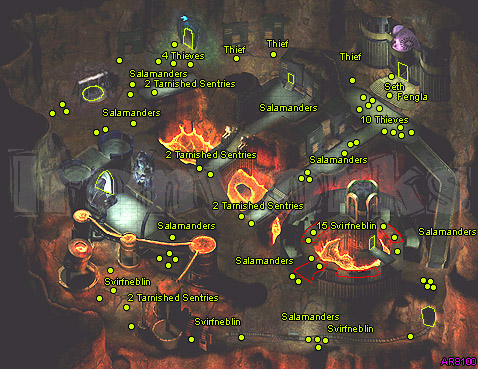
This takes us to the actual Dorn's Deep. The place where the dwarfs actually lived, and the only place that wasn't designed to deal with outsiders or the internment of the dead.
The first thing you notice is that there is actually a gate house. You can't see it from the outside (it looks just like it would have been part of the mountain side), but the entrance was actually fortified. If you got through that, the dwarfs built a large guard tower they could fall back to outside of the palace. You can also tell that this is the only living space of the dwarves, because this is where you find their mines, their living quarters, and the palace.
Of note is how small this area actually is.
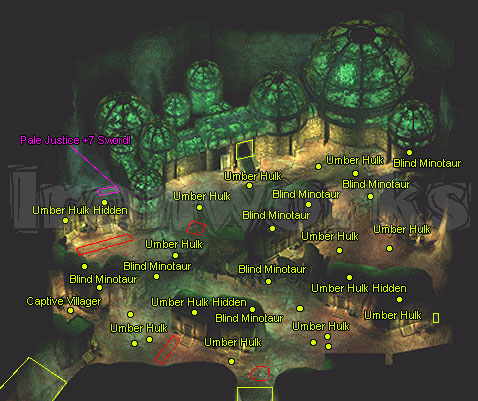
The actual living area for the dwarves of Dorn's Deep holds no more than two-three dozen or so houses. If each of these houses was for a family unit, which might include the elderly as well as their children who move in/out depending on marriage (likely given how clannish dwarven society is), the actual propulation of Dorn's Deep couldn't have been more than a few hundred dwarves.
And this fits in with everything we know of the place.
(1) Low numbers of dwarves who lived for many years in an area overrun with orcs
(2) Unlike other dwarven holds (such as the clan hold we see in Throne of Bhaal), the gates leading into Dorn's Deep are always hidden. They look like they are just part of the mountain.
(3) The only overland area they built was because of the crazed cousin of a king, and even then if you look at the area chosen it only has one narrow entrance. A narrow entrance that, as with all of the other entrances, would have looked like it was part of the mountainside.
(4) They continued to keep their actual living area hidden from outsiders, even their elven allies and trading partners (they built their market area far, far away from their living area).

Which leads us to the fall of Dorn's Deep. So how is it that a place designed for secrecy and defensibility could have fallen as it did? Well...Nym. But I'm not so sure he acts alone, as he would lead you to believe.
We know that there still is a drow settlement very close to Dorn's Deep. We know that Drow sorcerors and mages constantly sent waves of the undead to test the dwarven defenses. So why is it that we have no accounts of the Drow actually attacking? Well...they did. I can see why and how.
Attack Dorn's Deep would have been costly, even for them. So they used the orcs. The waves of the undead were not just for testing out the defenses, but for mapping them out. We can see from Presio that a powerful enough mage can create undead lieutenants from whom the mage can see and hear anything that the corpse does. So what likely was happening was that the Drow were sending these waves of the undead just for the purpose of seeing what they run into.
Once the Drow had the information they needed, they waited. They knew that with the alliance between the dwarves and the elves that the two would likely stand well together. So they sent Nym, using the information gleaned from probing the dwarves for so long, to steal the dwarven mage weapons. Nym then sold the weapons to the orcs.
Of great note, is that up until this time it was the elves who were battling against the orcs, as evidenced by...well, everything you see and read in the Hand. So the orcs turned against the elves with the dwarven made weapons. This caused Laurel to turn on the dwarves and start a small war with them (as seen by Anatha the paladin trying to stop the two from fighting, and dying beneath elven arrows and dwarven boots). The alliance fell apart, and Laurel's daughter traveled to the dwarves to restart the alliance.
She would have succeeded if the orcs didn't appear. And when the orcs did appear, they took the dwarves completely by surprise. How could the dwarves have been taken completely by surprise if they already knew that huge numbers of them were using their weapons to fight the elves? Easy. Because Dorn's Deep was designed to be hidden and had always been hidden. They had every reason to think that the orcs would keep fighting the elves. Laurel's daughter came to get reinforcements to relieve the siege on the Hand...
...well, with the elves locked down and desperate, the Drow just used their information to tip off the orcs as to where Dorn's Deep was. And the second the orcs knew, the inevitable happened. Dorn's Deep never had ostentatious gates like other dwarven strongholds. Every piece of art shows them just being in a mountain without any hint of their presence. The orcs found it, and simply overran all of the dwarven defenses.
And thus ended the Drow's long war with the dwarves. The drow never attacked themselves. They never made themselves out to be enemies who had to be destroyed. They never made themselves into a priority. They just used the orcs to do their dirty work for them.
Even when Dorn's Deep is taken over by Belhifet, you can see the drow are still up to their planning. Sure, Belhifet plans to flood the drow outpost with magma, but what are the chances of that going according to plan? Nym is still there as an operative. As (at least one of) the Drow who originally snuck into Dorn's Deep and stole the dwarven weapons, he knows the area better than ayone. He also is hiding out among the escaped gnomish slaves. The drow mercenaries in upper Dorn's Deep come across as a feint. So that Belhifet thinks that they are the spies and that by keeping them so far away he has escaped the gaze of the Drow. But it is Nym who is once again their real operative, most likely sent to sabotage the effort to destroy the Drow outpost. Something which he is more than happy to do by helping to supply the brave adventurers who have cut their way through all of Belhifet's other minions. Given that the adventurers destroy the effort to destroy the Drow outpost, all he did is reveal himself to further that cause and get his job done.
----
And thus ends my thoughts on Dorn's Deep. The little dwarven hold that couldn't remain hidden from the Drow. Anyone else have any thoughts, criticisms or the like?

So, looking at Dorn's Deep, the first thing that strikes me is how "unfinished" it appears when you first come to it. There is only a cave entrance leading to the huge cavern. Sure, there is a watch tower that looks like it was made by the dwarves, and there is a large statute of an elf and a dwarf. Besides for that it is just a large cave. There isn't even a gate for blocking it off from the outside world!
Well...this must mean that the dwarfs came to this very late in their existence. There is no evidence of any living quarters here, nor of any true inhabitation like the rest of the hold. So most likely this was the foreign quarter. Where merchants would have stalls (beneath a statue of them with their largest and most important trading partners, something which would have helped them in making favorable deals). No gates existed blocking it off to show that it was open, and only a solitary guard tower was built for security. But to get into the hold proper, there were only two bridges leading to it, meaning that these were easy choke points incase there was an invasion or things got out of hand.
This would also be the only area that outsiders would be allowed into. As evidenced by the book "Rock eaters, they are not." There, an elf writes about being given a tour of the hold, which amazed him enough that he had to write back to the other elves in the hand telling them about it. This shows that the elves of the Hand would have only been allowed into the merchant quarter, giving a skewed impression to them of what the dwarves were capable of building.

This leads us to the meeting hall of the dwarfs. Notice that unlike the market district, how defensible this is? If you can get over the narrow bridges, you get funneled into an area where dwarven crossbowmen could fire from both sides while warriors could have a shield wall to get through them. So this really isn't so much a meeting hall, or a barracks, but the actual gates to the dwarven hold.
Now, as further proof that this was one of the last areas to be built, you can see the entrance to the orrog caves. Those are just that...caves. Where the settled hold shows intricate splendor everywhere, these caves are completely bare. This most likely shows that there was planned expansion that they didn't get around to.

Following this, we get to the halls of the dead. So a question that always hit me was why the halls of the dead were so close to the gates/merchant halls. Well...this would have originally been pretty far from the actual living areas of the dwarfs. They placed this pretty far away, and it was probably very well hidden for a long time. To get there, you had to leave the hold proper and go through an overland area of ice. An overland area which for a long time did not have a large temple complex in it. The gates leading into the halls of the dead were likely hidden so you couldn't see them at first glance, just like how they are hidden inside the gates to the hold. So we are really going into this backwards.
The dwarfs would have entered via the overland ice valley. They would have first walked through the halls of the heroes, so that all would pay proper homage and respect to the greatest of the dwarven dead. From there, they would have entered the image above, where they would be able to go to the resting places of their kinsmen. Beyond that is

An area for the dwarven priests. Only later when the dwarfs kept expanding and needed a place to interact with the elves was the hold expanded into the caves that we first entered. They continued to go to great lengths to keep the halls of their dead secret (we know that there was at least one dead adventurer in the orog tunnels who couldn't find the secret door, and we can see how intricate and complex the gears in place were to even get to the halls of the dead).

This was likely just an empty tundra for much of the dwarfs' history. It was the cousin of one of their kings who convinced them to build this huge complex. One thing to note is how hidden this place is, showing how the dwarfs chose it for its secrecy.

Only one overland entrance, with a very narrow pass to get in. Finding this in the mountains would have been exceedingly hard. We can also see that rather than have huge gates, the dwarves had he preference to remain hidden. Every actual entrance to their lands is just a cave entrance, one that in the height of their power they would have probably kept hidden by blending it into the rocks.
We can see that the elves of the Hand struggled throughout their entire existence with the hordes of greenskins in the north. We can also see that the dwarves took a different route. Where the elves had a huge, grand fortress out in the open, the dwarves preferred to keep their hold a secret from the greenskins. As the dwarves were probably living there before the elves arrived, this makes the most sense.
We can also tell that the dwarves likely lived here for a long time, but never in any real numbers. In the halls of the dead, it is said that there were "hundreds" of skeletons, ghouls and ghosts that assaulted them, and that the dwarves were "greatly outnumbered." We can also see that tombs only house "hundreds" of interred dead. In the hall of heroes, there weren't even enough heroes to fill the entire place, with one going to an elf! This shows a lack of conflict in their history.
Ironically, we know that while it was the orcs who destroyed the dwarves, the orcs were not their traditional enemies. The axe of caged souls was created to fight against the waves of corpses that the drow would send against the dwarves. We also know that the evil elven maiden and her fire giants were attempting to destroy a nearby drow outpost.
So what this shows is that the drow were the traditional enemies of Dorn's Deep. That the Drow never invaded in any large numbers, and instead sent waves of the undead against their defenses. That this was also likely because of the gate to the negative energy plane being so close to the dwarven lands which would have made doing so easier than normal.

This takes us to the actual Dorn's Deep. The place where the dwarfs actually lived, and the only place that wasn't designed to deal with outsiders or the internment of the dead.
The first thing you notice is that there is actually a gate house. You can't see it from the outside (it looks just like it would have been part of the mountain side), but the entrance was actually fortified. If you got through that, the dwarfs built a large guard tower they could fall back to outside of the palace. You can also tell that this is the only living space of the dwarves, because this is where you find their mines, their living quarters, and the palace.
Of note is how small this area actually is.

The actual living area for the dwarves of Dorn's Deep holds no more than two-three dozen or so houses. If each of these houses was for a family unit, which might include the elderly as well as their children who move in/out depending on marriage (likely given how clannish dwarven society is), the actual propulation of Dorn's Deep couldn't have been more than a few hundred dwarves.
And this fits in with everything we know of the place.
(1) Low numbers of dwarves who lived for many years in an area overrun with orcs
(2) Unlike other dwarven holds (such as the clan hold we see in Throne of Bhaal), the gates leading into Dorn's Deep are always hidden. They look like they are just part of the mountain.
(3) The only overland area they built was because of the crazed cousin of a king, and even then if you look at the area chosen it only has one narrow entrance. A narrow entrance that, as with all of the other entrances, would have looked like it was part of the mountainside.
(4) They continued to keep their actual living area hidden from outsiders, even their elven allies and trading partners (they built their market area far, far away from their living area).

Which leads us to the fall of Dorn's Deep. So how is it that a place designed for secrecy and defensibility could have fallen as it did? Well...Nym. But I'm not so sure he acts alone, as he would lead you to believe.
We know that there still is a drow settlement very close to Dorn's Deep. We know that Drow sorcerors and mages constantly sent waves of the undead to test the dwarven defenses. So why is it that we have no accounts of the Drow actually attacking? Well...they did. I can see why and how.
Attack Dorn's Deep would have been costly, even for them. So they used the orcs. The waves of the undead were not just for testing out the defenses, but for mapping them out. We can see from Presio that a powerful enough mage can create undead lieutenants from whom the mage can see and hear anything that the corpse does. So what likely was happening was that the Drow were sending these waves of the undead just for the purpose of seeing what they run into.
Once the Drow had the information they needed, they waited. They knew that with the alliance between the dwarves and the elves that the two would likely stand well together. So they sent Nym, using the information gleaned from probing the dwarves for so long, to steal the dwarven mage weapons. Nym then sold the weapons to the orcs.
Of great note, is that up until this time it was the elves who were battling against the orcs, as evidenced by...well, everything you see and read in the Hand. So the orcs turned against the elves with the dwarven made weapons. This caused Laurel to turn on the dwarves and start a small war with them (as seen by Anatha the paladin trying to stop the two from fighting, and dying beneath elven arrows and dwarven boots). The alliance fell apart, and Laurel's daughter traveled to the dwarves to restart the alliance.
She would have succeeded if the orcs didn't appear. And when the orcs did appear, they took the dwarves completely by surprise. How could the dwarves have been taken completely by surprise if they already knew that huge numbers of them were using their weapons to fight the elves? Easy. Because Dorn's Deep was designed to be hidden and had always been hidden. They had every reason to think that the orcs would keep fighting the elves. Laurel's daughter came to get reinforcements to relieve the siege on the Hand...
...well, with the elves locked down and desperate, the Drow just used their information to tip off the orcs as to where Dorn's Deep was. And the second the orcs knew, the inevitable happened. Dorn's Deep never had ostentatious gates like other dwarven strongholds. Every piece of art shows them just being in a mountain without any hint of their presence. The orcs found it, and simply overran all of the dwarven defenses.
And thus ended the Drow's long war with the dwarves. The drow never attacked themselves. They never made themselves out to be enemies who had to be destroyed. They never made themselves into a priority. They just used the orcs to do their dirty work for them.
Even when Dorn's Deep is taken over by Belhifet, you can see the drow are still up to their planning. Sure, Belhifet plans to flood the drow outpost with magma, but what are the chances of that going according to plan? Nym is still there as an operative. As (at least one of) the Drow who originally snuck into Dorn's Deep and stole the dwarven weapons, he knows the area better than ayone. He also is hiding out among the escaped gnomish slaves. The drow mercenaries in upper Dorn's Deep come across as a feint. So that Belhifet thinks that they are the spies and that by keeping them so far away he has escaped the gaze of the Drow. But it is Nym who is once again their real operative, most likely sent to sabotage the effort to destroy the Drow outpost. Something which he is more than happy to do by helping to supply the brave adventurers who have cut their way through all of Belhifet's other minions. Given that the adventurers destroy the effort to destroy the Drow outpost, all he did is reveal himself to further that cause and get his job done.
----
And thus ends my thoughts on Dorn's Deep. The little dwarven hold that couldn't remain hidden from the Drow. Anyone else have any thoughts, criticisms or the like?
44

Comments
My rationale is...
(1) Dorn's is never mentioned anywhere outside of the game
(2) it is really poorly known. Your dwarf pcs have never heard of it. Only locals do and in that it is as a place of treasure. A place with a large population would have been better known, right?
(3) Low numbers and a grand hold can be explained by the use of elementals. Their great forge used portals to the varying elemental realms. To me, going this far shows an inability to expand far enough to get said resources.
(4) The few numbers given seem small.
That said...the elves and dwarves did right above ground. And you are certainly right that video game maps show very few dwelling places. So your interpretation could indeed be correct.
People sometimes criticize IWD for not having party banter and NPC interaction, but to say it is all combat and no story is to do it a grave injustice.
IWD actually has a superlative atmosphere and setting, and a very good story and lore.
BelgarathMTH and bengoshi: Thank you both for your kind words! Also, MTH, you make a great point about IWD and it's atmosphere and setting. It really is what sets it apart from other games.
Killing Nym and Malavon are like the best parts of the game..
@Grum, I bow before the insights & enlightenments which you'd bestowed upon us!
I just finished a replay of the EE so revisited Dorn's Deep. I hadn't played for years, so it was almost new for me to play through Chapters 4-6 again.
I think your reasoning behind the layout works well. My issue is that I don't think the actual layout is realistic or logical, which is a game developer problem.
As you point out, the entrance to Upper Dorn's is really just a poorly defensible cavern. We don't even see many remnants of destroyed walls or gates or anything, just the one watch tower. Why were there not better defenses to this section of the city? Even if it was only foreigners staying there, the dwarfs should want all sections of their city better defended.
And why is Upper Dorn's the cemetery and a meeting hall? Why would visitors have to go through the cemetery in order to access Lower Dorn's? We can assume visitors could also just skip Upper Dorn's and the museum and go straight to Lower Dorn's, but then why have that statue of elves and dwarfs working together in the first cavern?
For a city constantly under siege by evil armies, the entire layout of the city is strange. There's one section which is basically a cave with a graveyard in it, then an open glacier with a museum, then the actual city. Why would the dwarfs divide their city on either side of an open ice field/glacier and create multiple borders to defend? No wonder they succumbed to the hordes eventually.
I actually really enjoyed Lower Dorn's and how it did feel like the ruins of a city, being interconnected. But I think how it relates to Upper Dorn's and the glacier don't make much sense from a city planning or military planning stance.
Just the set up of Upper and Lower Dorn's and the glacier seem odd to me. The way the maps are set up, we really don't need to pass through Upper Dorn's or the glacier to reach Lower Dorn's, as there's an exit to the world map on the entrance screen to Lower Dorn's. Maybe this was just a gameplay issue since it would not be fun to have to go through multiple maps if we wanted to return to Kuldahar, I don't know. But the way it's presented in the game, IMO, feels like they are three distinct zones that are connected but not required to access each other. It was that the PCs didn't know where the entrance to Lower Dorn's was, so they had to follow the trail through Upper Dorn's.
You flatter! Not that I complain, so thanks.
Dorn's deep is epic. In fact the whole of IWD is so achingly beautiful...
I'm getting my tonsils out on Wednesday and will have to be off work for two weeks. Guess what I'll be doing!! Your post has inspired me to start a new playthrough. It's been a while since I played.
For your next playthrough, I highly recommend making a themed party. Changing the motivation of your party makes for alot of fun when you go through the game again.
I've done an all dwarf playthrough, with the idea in my head that their original mission was to get the shield Stoutward. Once they had it, they found themselves stuck until the pass thawed. While just trying to get back to their clan hold they found themselves in Dorn's Deep, and you can guess how their motivation changed then. Even in HoW, they meet a dwarf whose kin was murdered by the barbarians, which sucked them into that conflict.
All elf playthroughs are also fun, as it really changes the tone when going through the hand. Doing things like collecting all of the lore and artifacts as possible makes it *feel* different. That, and running into maiden Ilmaldia is a different encounter when fighting one of your own who has fallen so far.
One thing that I've always meant to do but never got around to it was the all nature playthrough. With every character being a druid or ranger (except for perhaps a thief...but even that isn't absolutely necessary. Perhaps a berserker->thief...).
Doing so with RP in mind makes each area just feel different and keeps the playthrough fresh. Also, it closes down different options, which makes you appreciate the different classes more.
@Grum , never stop being you, this is great.
The first is IWD. The second is Vampire Bloodlines.
Guess who we'll be starting a new adventure in Easthaven thanks to this post?